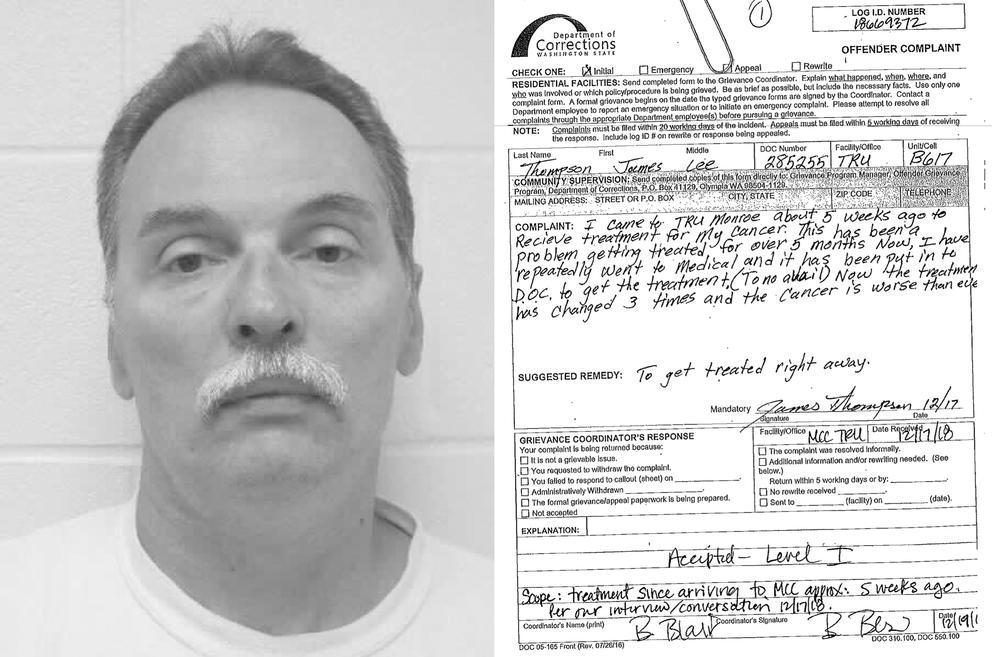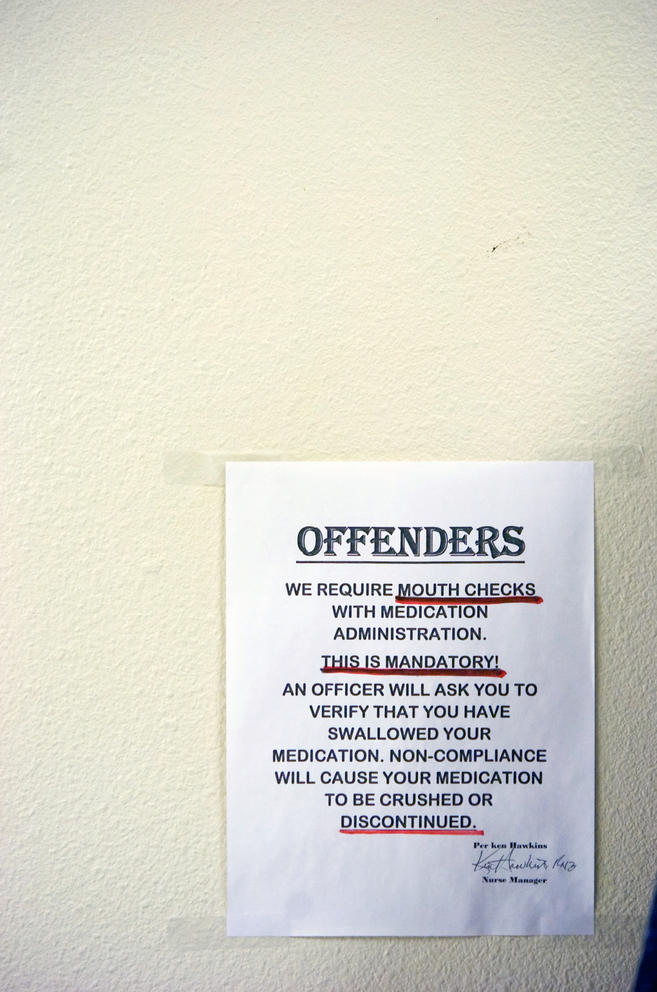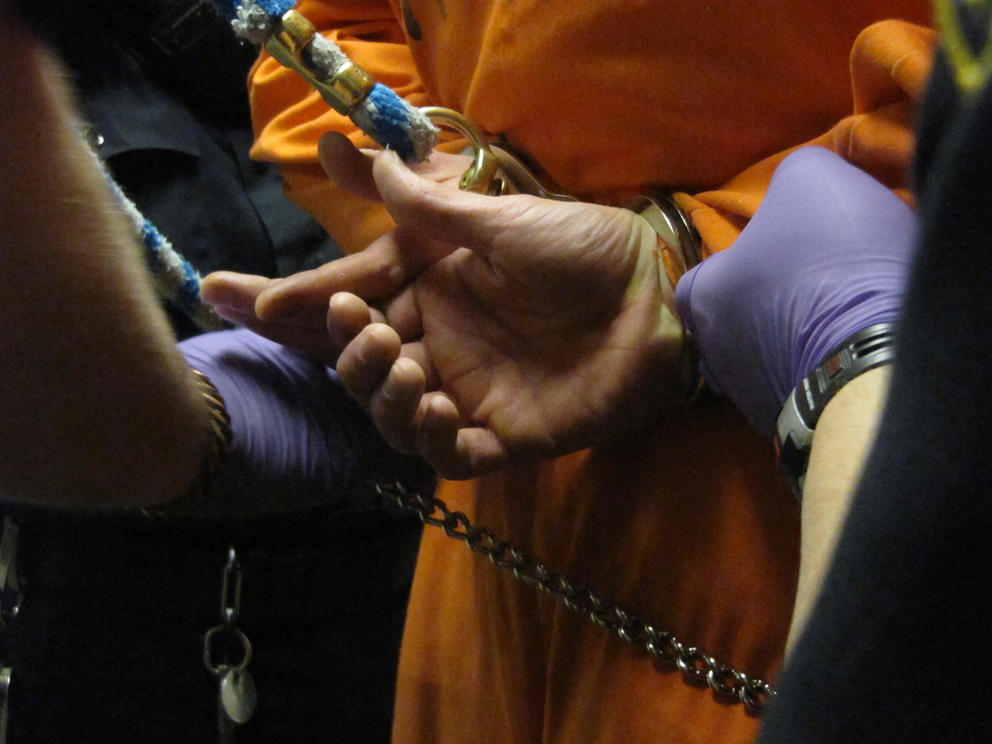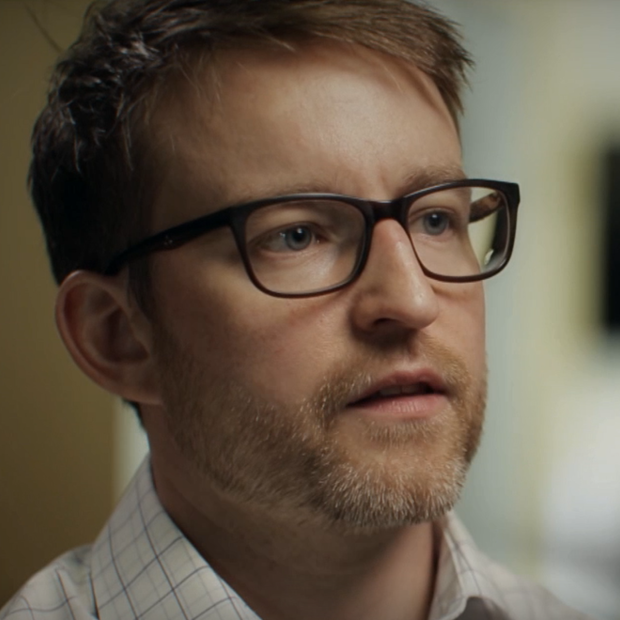“By DOC not providing me treatment, they have decided my fate and are determining I do not deserve to live,” Thompson wrote in a note to prison officials authored during his final months.
Williams, too, “was literally begging for help,” said Joanna Carns, director of the Office of Corrections Ombuds. The department’s practices, she continued, do “start rising to a cruel and unusual level, in my opinion.”
The men’s deaths, in their disturbing individual circumstances and bureaucratic similarities, strike the prison system’s critics as evidence of a larger failure to care for inmates with cancer.
“Imagine if that had been an insurance company who insures you or I that had denied an individual treatment,” said Kim Gunning, a staff attorney with Seattle nonprofit law firm Columbia Legal Services. “If … it was somebody who wasn't in prison, there would be an uproar.”
Cancer already is the leading cause of death among prisoners, and its toll on incarcerated people is rising as the prison population in Washington and across the United States becomes increasingly elderly. The number of Washington state prisoners over 60 has doubled in the past decade; they now account for more than 6% of the state’s 19,000 inmates.
The corrections ombuds office, created two years ago by legislative mandate to independently investigate complaints against the Department of Corrections, issued detailed reports concerning each man’s treatment, or lack thereof. Investigators are currently examining the circumstances surrounding several other cancer deaths.
A spokesperson for the department said work is underway “to close gaps in information, diagnosis and treatment of our patients,” and has asked for money to hire “patient navigators” to coordinate treatment for incarcerated people with complex medical issues, like cancer.
Cancer care poses problems that prison systems are badly positioned to meet. Prisons tend to be distant from urban centers with cancer doctors, and health services afforded most prisoners don’t include regular preventive care. Beyond those practical barriers, inmates, their families and critics describe a cost-obsessed culture pervasive in prison systems that encourages inattention and half-measures.
‘Just horrendous’
Many facets of cancer care prove challenging, acknowledged Janelle Guthrie, the department’s communications director, while noting that some incarcerated people diagnosed with cancer beat back the disease. Care coordination, she said, can prove difficult for patients on either side of the prison wall.
“Even in the community setting,” she said, “there can be gray areas in ownership of tasks and follow-up, and challenges in reliable communication pathways between different health care offices.”
Dr. Laurie Lyckholm is an oncologist with more than two decades’ experience treating men housed at the prison inside Virginia Commonwealth University’s hospital. She said delay and resistance to pain management are endemic in most of the correctional systems she’s reviewed.
Reading inmate complaints for a recent academic paper she authored on penal oncology, Lyckholm found horror story upon horror story. An inmate unable to lie down because cancers in his bowels had grown so painful. Another whose complaints about unceasing bleeding had been “treated” with an extra allotment of undershorts.
“The care that they are provided is just horrendous,” Lyckholm said from her home in Iowa, where she now practices medicine. “It’s just like, why would anybody do that to a human being?”
Reflecting on her time tending to prisoners at the Richmond, Virginia, hospital, the cancer doctor also recounted troubling tales of a different sort — prisoners whose attorneys had fallen asleep in court or who could credibly claim to have simply been in the wrong place at the wrong time. She treated men who suffered from profound developmental delays and others incapacitated by mental illnesses. Bureau of Justice Statistics reviews have found that about 60% of state prisoners have diagnosable mental health issues. Racial disparities, which remain rife in the justice system, were ever evident.
With cancer care, speed — in detection, in surgery, in radiation and chemotherapy, in addressing pain — often determines whether a cancer kills. In prison, care comes slowly when it arrives at all.
Gunning, the Columbia Legal Services attorney, said she has piles of letters from inmates stuck waiting. Prisoners with persistent gut pain, growing moles or other ailments that would draw most physicians’ attention are consistently told to “watch and wait.”
“Delay is one of the themes of every single letter we get,” she said. “It gets to a point where even if DOC initiated the treatment that we would expect out in the outside community, it's too late.”
A woman incarcerated at the Washington Correctional Center for Women near Gig Harbor waited months for a colonoscopy as prison health workers attempted to treat her distended stomach and severe constipation with diuretics.
“It looked like I was eight months pregnant and my stomach was really hurting,” she said in a declaration made as part of a recent lawsuit managed by Columbia Legal Services.
The 45-year-old visited the prison clinic repeatedly during the three years that followed. When she did receive a colonoscopy, in early 2015, four years after prison medical providers first investigated her protruding belly, doctors found that a cancerous tumor had taken root inside her.
“I was devastated,” the woman recalled in court papers. “I knew something was not right all along. However, I kept being treated as if nothing was wrong and that I did not know my own body.”
Responding to her claims, the prison’s medical director argued in court that, while “it is true that early detection is ideal for colon cancer,” the woman didn’t show “any symptoms remotely suggestive of rectal/colon cancer until September 2014,” when she reported a bleeding abscess. Even then, medical staff waited months to order the test.
The woman received radiation treatment and then surgery, complications from which saw her hospitalized for more than a month, she recalled in the declaration. Surrounded by her family at St. Joseph Medical Center in Tacoma, she said goodbye to her 16-year-old son from what she believed to be her death bed. It wasn’t.
Her cancer ultimately went into remission. Help arrived in time for her, help that was denied Williams and Thompson.
Two prisons, two ‘patients,’ one pattern
Striking similarities emerge in Office of Corrections Ombuds investigative reports examining the men’s final years.
In medical records and complaints from the inmates, and in interviews with prison staff responsible for their care, investigators detected a pattern of delay shared by two far-flung prisons. Though Thompson and Williams both required immediate care for life-threatening cancers, bureaucratic holdups and inexplicable mistakes meant both spent more than a year waiting for treatment that never really arrived.
To describe the deaths as failures of bureaucracy perhaps understates the facts.
Thompson’s path to treatment was delayed weeks because a prison medical director first forgot his file at home and then neglected to familiarize himself with Thompson’s case before a crucial meeting. Williams’ written pleas were routinely kicked back to him because he failed to note insignificant dates or, in one case, sign a form. Ombuds office investigators found requests for help from both men that, if they drew any response, were often administratively closed.
Thompson was the first to fall ill.
Threatened with execution but sentenced to life without parole in the 1988 murder of a Grays Harbor County couple, Thompson was housed at the Washington Corrections Center at Shelton in February 2018 when his right ear became painful and deaf. Weeks of antibiotic regimens were followed by a specialist consult, an MRI scan, a biopsy and, that June, surgery to remove the malignant tumor.
The months after saw him regularly meet with oncologists at Seattle Cancer Care Alliance, UW Medical Center and elsewhere. All agreed Thompson needed radiation treatment and chemotherapy. It never came.
“It appears that he fell into a gap, with a sole Physician Assistant repeatedly and persistently trying to notify as many people as possible as the months dragged on,” ombuds office investigators said in a report released in July.
In letters to prison officials, Thompson is measured and direct as he describes his doctors’ recommendations. They did little good. Appointments were set and then canceled, according to an ombuds office report, even as the tumor broke through the skin behind his earlobe “squirting blood.”
Chart notes and internal communications graphically describe the pain Thompson experienced in the final year of his life. Radiation treatment aimed at easing it was recommended but never delivered.
Pain, Dr. Lyckholm said, is one of cancer’s hallmarks. “It's terrible, to tell you the truth,” the oncologist said. “If it goes to the bone, it is killer pain.”
In December 2018, Thompson was transferred to the Monroe Correctional Complex, a suburban Seattle campus that serves as Department of Corrections’ medical hub. Dr. Julia Barnett, the complex’s former medical director, had been placed on leave following a series of inmate deaths weeks before he arrived.
Six months had passed since Thompson’s surgery when he finally saw an oncologist, who told him radiation treatment would be “futile” because the cancer had progressed too far.
The department's failure to get Thompson the treatment “contributed to his cancer progressing to an incurable stage, effectively killing him,” Thompson’s attorney, Darryl Parker, said in a claim for damages obtained by Crosscut through a public records request. Thompson, the Seattle civil rights attorney continued, “was in extreme pain and stress which could have been mitigated, if not avoided entirely, had he received appropriate medical care.”
Sixteen months after his diagnosis, Thompson was finally scheduled in mid-October for what would’ve been his first radiation treatment. He bowed out. What, after all, was the point?
On New Year’s Day, Thompson became the first of what will be dozens of Washington prisoners to die in 2020. Three weeks later, the state of Washington paid a $400,000 settlement to his family.
‘How do you legislate compassion?’
Thompson had not yet had his first MRI when, in March 2018, a registered nurse at the Monroe Correctional Complex found a lump on Williams’ chest. According to an ombuds office report, the nurse notified her supervisor, but no one followed up with Williams, even as he begged for help.
Williams, who was less than two years away from finishing the sentence he received in 2015 after shooting his girlfriend’s son, didn’t undergo a biopsy until that August. The test showed Williams had advanced breast cancer, although two more weeks passed before anyone told him.
In a note to prison staff, Williams said he needed to start chemotherapy immediately if he was to survive. As had happened before and would happen again, the note was returned to him for failing to indicate a date. Weeks crawled by, and Williams grew increasingly afraid for his life.
“I am dying,” Williams wrote to prison staff. “What is holding up my treatment that will save my life?”
The responding worker chastised Williams for failing to sign and date his request, told him to contact medical services directly and canceled his request.
Had he received prompt care when the lump was discovered, investigators later learned, Williams may have lived long enough to leave prison. Instead, on June 12, 2019, Williams died of a cancer that had never been treated.
In her time treating incarcerated people with cancer, Lyckholm said her terminally ill patients shared a desire to die a free citizen.
“One of the things that they wanted more than anything was to not die a prisoner,” the doctor said in a recent phone interview. “Even if they couldn't go home, they wanted to be released from the prison.”
Guthrie, the Department of Corrections spokesperson, pointed to placement in the medical release program as one of the services sometimes provided terminally ill incarcerated individuals.
“Our practitioners have personally delivered terminal diagnoses and cared for patients with palliative measures at end of life,” she said by email. “This includes pain treatment and comfort for distress and suffering for those with terminal conditions … and, on occasion, calling family to be present for final visitations.”
But terminally ill prisoners are rarely released in Washington. In 2018, the last year for which records are available, 28 incarcerated people were considered for “extraordinary medical placement.” Only two were released, while eight died before their petitions were decided; the average wait for a decision was nearly seven months.
Ombuds office investigators examining Williams’ death noted that, as of late 2019, no staff had been investigated or disciplined for their role in Williams’ death, nor had any reports been made to medical licensing authorities. An internal mortality review did not identify any areas for investigation or discipline.
Julie Martin, the department's deputy secretary, described its medical staff as deeply committed to caring for a vulnerable population often ignored by the wider community.
“We do our darnedest,” said Martin, who in her position is the department’s No. 2 administrator and who has also been the acting head of health services since early March.
“I think that the untold story is how many countless hours are spent by all of our clinical and health services, how they care for those individuals that are so important to the department,” she continued in a recent interview with Crosscut. “I've received so many appreciative emails and cards from incarcerated people … [for] taking the time to care for them.”
The takeaway for ombuds investigators was that the Department of Corrections is missing opportunities to diagnose cancer in its earliest stages, and not treating patients already diagnosed with cancer. But Carns, the ombuds office’s director, also argues there’s a need to change the “culture and attitude” within the department.
“How do you legislate compassion?” Carns asked. “It’s about the individual wanting to do the right thing.”
Carns said she believes change can be made. Even with the pandemic threatening to tear through America’s prisons, Carns said, this is “a tremendous time of optimism for corrections.”
“We are in the midst of national and international movements related to decarceration, sentencing reform and trauma-informed treatment,” Carns said. “But it takes commitment and leadership from the top on down, continued engagement from the community and accountability from policymakers who hold the purse strings.”
This is the second in a three-part series on prison health. Next: Inmate death rates are rising as prison populations shrink. WA lawmakers are taking a closer look at the data and potential solutions.









